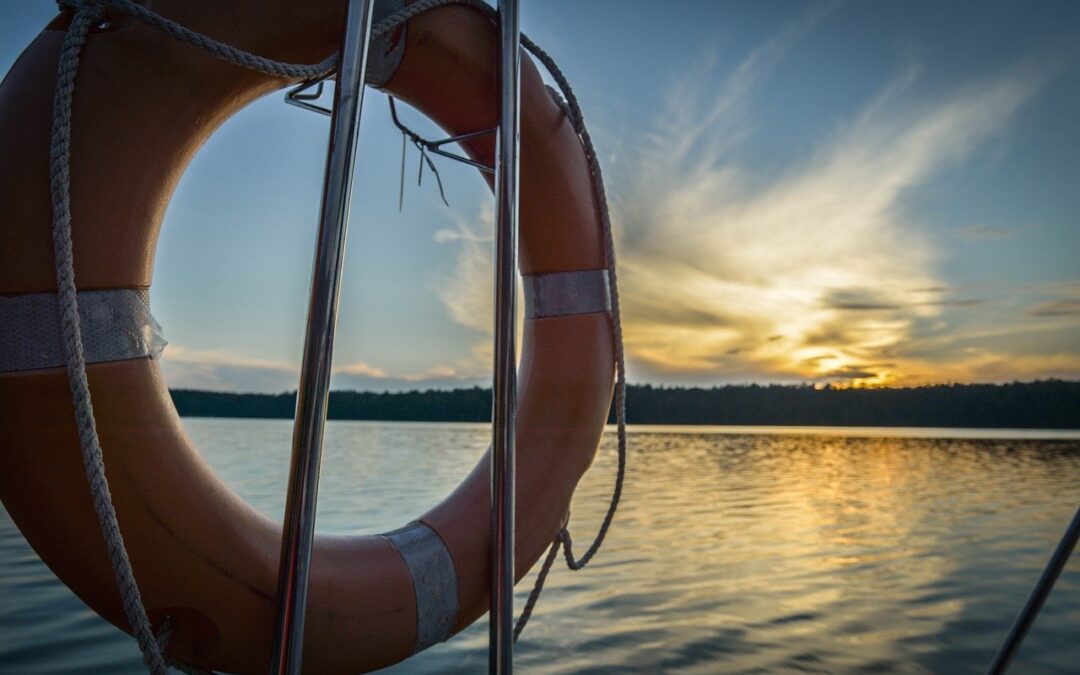When looking for survivors of an accident at sea, do not use the AUTO mode for radar rain, sea and gain settings. Otherwise, a SART may be overlooked. The Nautical Institute issues this warning in its latest Mars Report.
The Nautical Institute gathers reports of maritime accidents and near-misses. It then publishes these so-called Mars Reports (anonymously) to prevent other accidents from happening. A summary of this incident:
During a recent marine search and rescue incident, a survivor was drifting in the water holding an activated 9 GHz (X-band radar) Search and Rescue Transponder (SART). The survivor saw four vessels pass close by as he held the SART above water, but none of the vessels’ crews detected the SART on their radars.
The survivor was finally rescued after three hours in tropical stormlike conditions. After the incident, the survivor’s SART was tested. It was found to be in good condition and operating in accordance with all requirements for a 9 GHz SART. So, what went wrong?
Also read: Deadly man overboard while rigging pilot combination ladder
The post-incident analysis revealed the X-band radar settings that are optimal for navigation might actually prevent the SART signature from displaying on a searching vessel’s radar screen. The gain, sea clutter, rain clutter, and tuning on X-band radars are commonly operated in Auto mode, but this was found to drastically reduce or completely eliminate the ability of the receiving radar to display the dots or circular lines that indicate the SART’s position.
In addition, the orientation of the SART antenna and the height of the SART above the water both affect the ability of an X-band radar to detect a SART. The SART is designed to free-float or to be mounted on a pole in a life raft or on a survival craft. This height above the water will improve the device’s ability to transmit and receive signals, while also providing a much better target than a SART floating in the water.
The narrow end of a SART is the antenna. This should be vertical and as high as possible. But the narrow end is also the only suitable location for a person in distress to firmly hold a SART. If a person in the water holds a SART by its antenna, the SART’s ability to transmit and receive signals from an X-band radar will be reduced.

Advice from The Nautical Institute
- If you are on a vessel that has been assigned search and rescue duties and are searching for possible survivors, do not use the AUTO mode for radar rain, sea and gain settings. Use the manual modes and adjust the rain and sea clutter settings to the lowest possible setting that will still give a somewhat clear screen. The gain should be put to the highest possible adjustment without causing undue radar returns that pollute the screen.
- If you are a survivor floating in the sea and have an activated SART in hand, hold it as high as possible above your head but do not use the narrow end as a handle. This is the antenna.
- If you are a survivor in a lifeboat or liferaft, mount the SART as high as possible with the narrow end up.
Also read: ‘On safe ships run by quality companies, persons washed overboard should be zero’
Mars Reports
This accident was covered in the Mars Reports, originally published as Mars 202312, that are part of Report Number 365. A selection of this Mars Report was also published in SWZ|Maritime’s April 2023 issue. The Nautical Institute compiles these reports to help prevent maritime accidents. That is why they are also published (in full) on SWZ|Maritime’s website.
More reports are needed to keep the scheme interesting and informative. All reports are read only by the Mars coordinator and are treated in the strictest confidence. To submit a report, please use the Mars report form.
Also read: Know what to do when someone falls overboard








